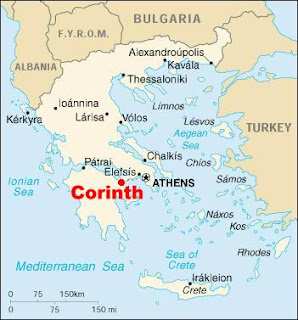The contents of this blog follows a general timeline of my courses Art Theory 1 and 2.
Wednesday, June 5, 2013
Greek Tragedy
Greek Tragedy
History of Theatre 1 - From Ritual to Theatre
History of Theatre 2: Development of Classical Greek Tragedy
Homer and his writing
Oedipus
Greek Sculpture
The Greek Sculpture
1. Statue of a Kouros
2. The Development of the Greek Sculpture
Classical and Hellenistic Sculpture
The Winged Victory of Samothrace
Doryphoros (Spear-Bearer)
Polykleitos' Doryphoros (Spear-Bearer), an early example of classical contrapposto.
Laocoon and his sons
Greek Architecture
The Classic Order (Greek Architecture)
1. Doric [ The Parthenon]
Of the three columns found in Greece, Doric columns are the simplest
Of the three columns found in Greece, Doric columns are the simplest
2. Ionic
The Ionic order follows after the Doric order and is more elaborate.
[go to the following website to get all three orders explained http://www.cmhpf.org/kids/dictionary/classicalorders.html ]
The Ionic order follows after the Doric order and is more elaborate.
[go to the following website to get all three orders explained http://www.cmhpf.org/kids/dictionary/classicalorders.html ]
3. Corinthian
The Corinthian order is the most decorative and is usually the one most modern people like best.
An overview and summary
Professor Kenney Mencher on the Classical Order
The names of these orders derive from the geographical places they were used first.
Doris and Ionia are regions in Greece
Ref: Ionia. 2013. [image]. Available at: http://en.wikipedia.org/wiki/Ionia . [Accessed 5.6.2013]
and Corinth was a city
Ref: Corinth. 2013. [image]. Available at: http://8170.pbworks.com/w/page/37864131/Corinth. [Accessed 5.6.2013]
The Corinthian order is the most decorative and is usually the one most modern people like best.
An overview and summary
Professor Kenney Mencher on the Classical Order
The names of these orders derive from the geographical places they were used first.
Doris and Ionia are regions in Greece
and Corinth was a city
Ref: Corinth. 2013. [image]. Available at: http://8170.pbworks.com/w/page/37864131/Corinth. [Accessed 5.6.2013]
Parthenon
Homage to the Parthenon Marbles
The poem recited is by Lord Byron
Canto XV from 'Childe Harold's
Pilgrimage' by Lord Byron, 1812
Cold is the heart, fair
Greece, that looks on thee,
Nor feels as lovers o’er the dust they loved;
Dull is the eye that will not weep to see
Thy walls defaced, thy mouldering shrines removed
By British hands, which it had best behov’d
To guard those relics ne’er to be restored.
Curst be the hour when their isle they roved,
And once again thy hapless bosom gored,
And snatch’d thy shrinking Gods to northern climes abhorr’d!
Parthenon
The History of the Parthenon
Building - Destruction - Restruction....
http://www.mlahanas.de/Greeks/Arts/Parthenon.htm
The Parthenon
The Parthenon
Athena Parthenos (replica)
http://venetianred.net/tag/classical-greek-sculpture/
Greece: Map
Ref: Greek Sanctuaries. 2007 (image). Available at: http://commons.wikimedia.org/wiki/File:Map_greek_
sanctuaries-en.svg [Accessed 5.6.2013]
sanctuaries-en.svg [Accessed 5.6.2013]
Greece: European Map
Ref: Europe map. 2013 (image). Available at: http://geology.com/world/europe-satellite-image.shtml . [Accessed 5.6.2013]
Subscribe to:
Comments (Atom)




